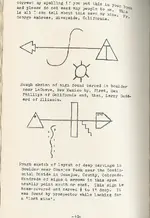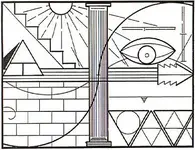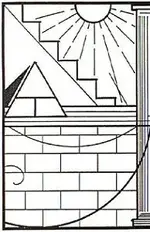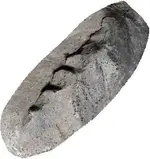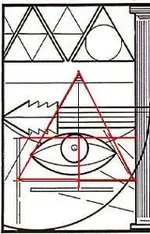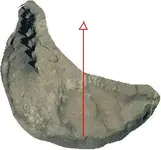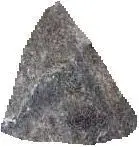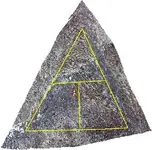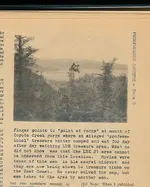Of course we're interested. Care to elaborate?
Charles Dean Miller at one time had associated with a Californian treasure hunting club where some have claimed he first saw a copy of the "Lue map" Even back then there was speculation of its origin.
I congratulate Old bookaroo on some brilliant observations as that was origins of the Lue. Two key points he raised one that an unpublished document in the Santa Fe Archives and references in the Smithsonian institute. The Date of 1890 is interesting as it predates the alleged Nazi theories as the Nazi party did not exist in its last form, except for Thurle ultima society in Germany from memory. So I leave that line of thought to the conspiracy theorists.
One should ask why would such a institution as the Smithsonian institute mention such a document? Clearly this connection is some thing to be investigated deeper.
The Smithsonian at one time acquired the papers of George Davidson from the Californian academy of Sciences after his death. George Davison had an friendship with a man called James Lick.
James Lick was one of the most wealthiest men in California who was known by some as a grumpy old miser but could be at times a marvelous benefactor to society.
Despite his eccentricities, Lick is best remembered for his strong will and determination, his ambition and drive, his honesty and generosity. Yet there lingers about the edges of these harder qualities, a shade of resignation, even fatality. Once, while carrying an ox-yoke on his shoulders, he was overtaken by a friend with a horse and wagon who offered him a ride. Lick thanked the man but declined. His friend then asked if he wouldn't at least put the heavy yoke in the wagon. "So far in life", he replied, "I have born my yoke patiently, and I will not shirk my duty now".
One evening in his 77th year, alone in the kitchen of his Santa Clara homestead, Lick collapsed from a severe stroke. In the morning he was found, alive but helpless, by his foreman, Thomas Fraser, a man who, years before, had earned a job by unquestioningly following Lick's orders to stack and restack a pile of bricks in the rubble of a burnt house. Lick lived another three years, but never completely regained his health.
His estates now included, in addition to many properties in San Francisco and the Santa Clara Valley, holdings on the shores of Lake Tahoe, a huge ranch in Los Angeles County, and all of Santa Catalina Island off the southern California shore. He was among the richest men in a state noted for its riches.
Lick's infirmity forced him to move to a room in his San Francisco hotel, where he could be more easily cared for. It was there that he turned his attention to the disposition of his fortune, formulating a variety of bequests ranging from public baths to a home for aging widows, from a generous donation to an orphanage to one for the prevention of cruelty to animals, from the foundation of a vocational school to monuments honoring his parents and grandfather.
Never far from his mind, however, was the monument he wished to leave to his own memory. At first, Lick wanted to set aside a million dollars to erect enormous statues of himself and his parents, so tall as to be visible far out to sea. This plan was abandoned when a friend pointed out that the monumental statues would make vulnerable targets in the event of a naval bombardment. The scheme was replaced by an even grander one: a pyramid, larger than the Great Pyramid in Egypt, to be built in downtown San Francisco upon a block which he entirely owned! But, to the lasting benefit of science - if not to the San Francisco tourist trade - Lick's thoughts were turned from pyramids to telescopes by the efforts of George Davidson of California Academy of sciences.
The "Lue" was I believe part of series of drawn ideas of monuments by James Lick during the years before he died. His drawing was later taken out of context by others as a possible treasure map few years after Licks death with the originator and context of the drawing forgotten.
The lost James Licks drawing via the scattered papers of George Davidson became this alleged mystery "Lue" map to a fortune in treasure.
Corp




